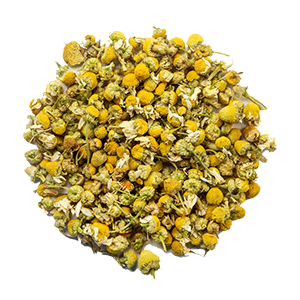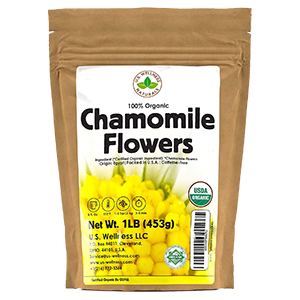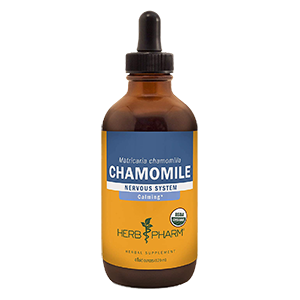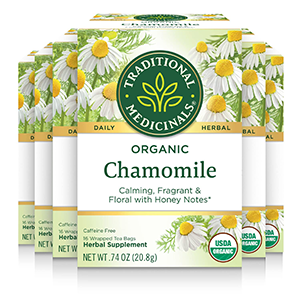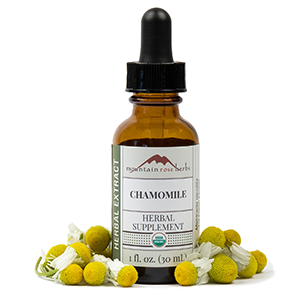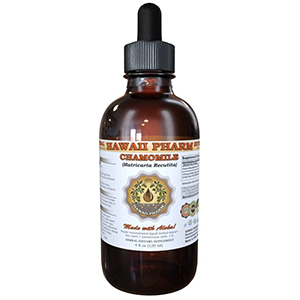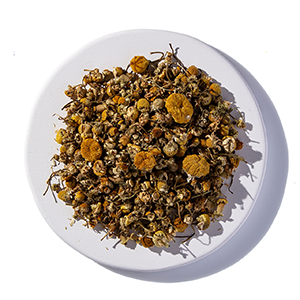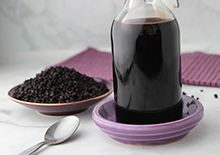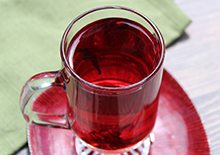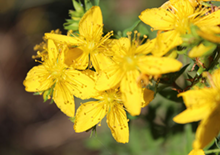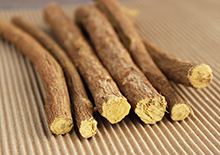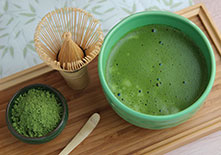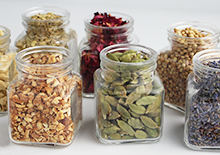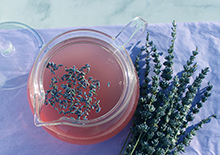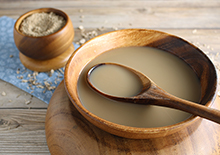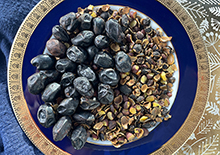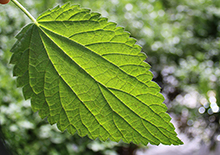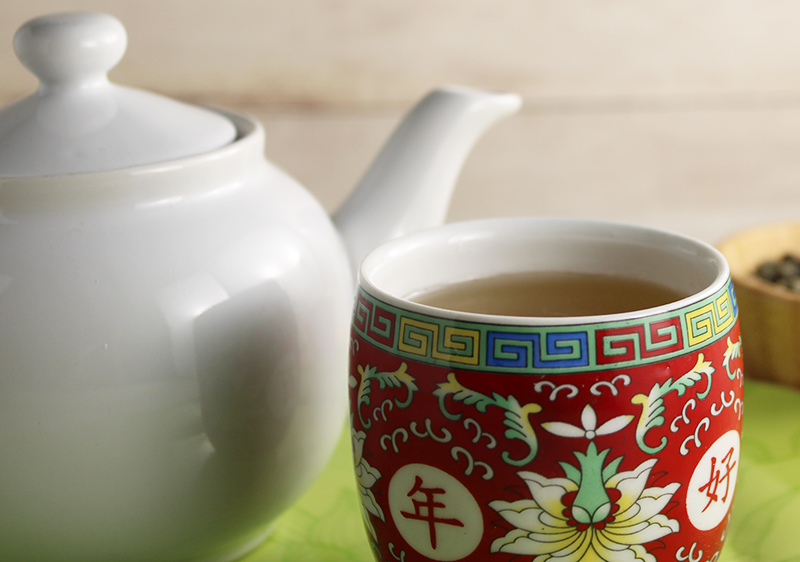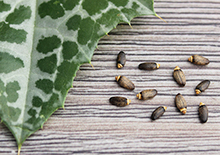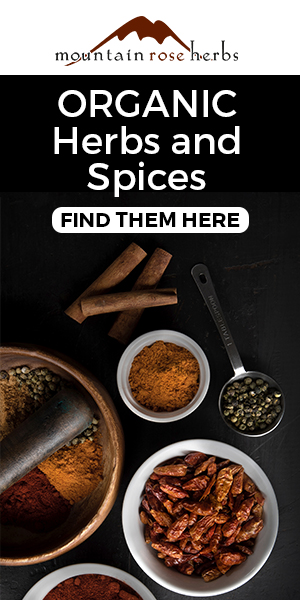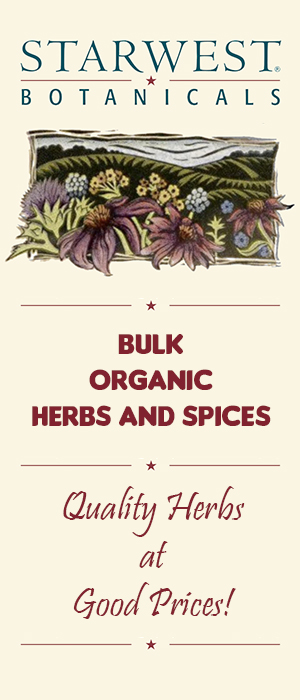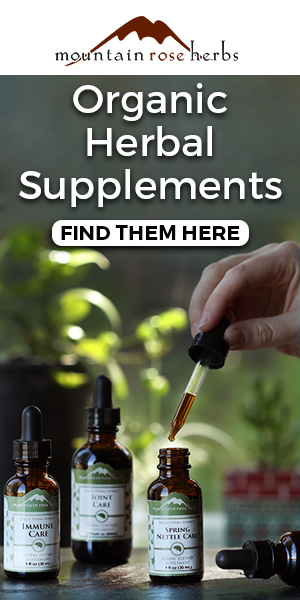- Home
- List of Herbs
- Chamomile Tea
Chamomile Tea 101, Essential Info on this Worldwide Favorite
Intro | German Vs Roman | #1 Benefit | 3 Lesser-Known Uses | Chamomile Tea Recipe | Precautions | Shop
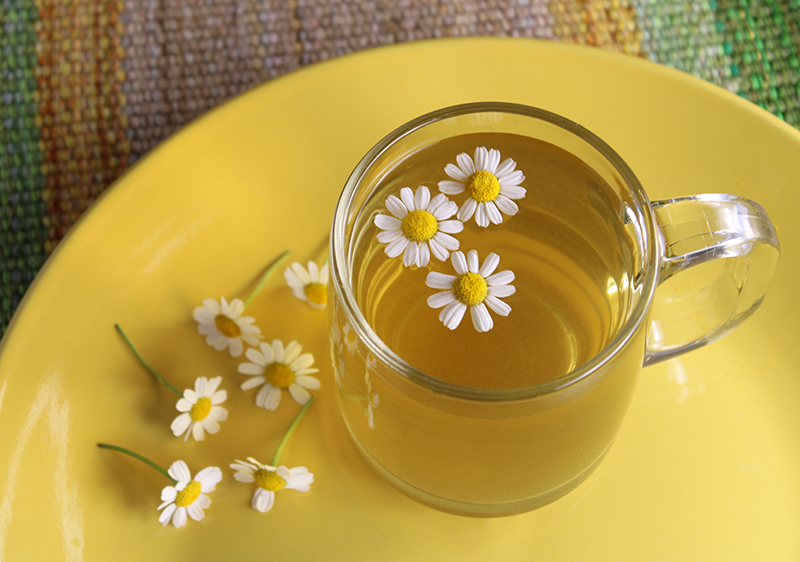
Chamomile tea is probably one of the most common herbal teas known around the world for its calming qualities and tasty flavor.
Utilized in ancient Egypt and extensively in England and other parts of Europe throughout the Middle Ages, chamomile was listed in some of the first botanical pharmacopeia in Western Herbalism and is a classic herb garden tradition.
German Chamomile Vs Roman Chamomile
Table of Contents
Intro | German Vs Roman | #1 Benefit | 3 Lesser-Known Uses | Chamomile Tea Recipe | Precautions | Shop
There are several chamomile types but the main two species used for herbal teas are Roman chamomile (Chamaemelum nobile or Anthemis nobilis) and German chamomile (Matricaria chamomilla or Matricaris retutica).
They both have a similar tiny daisy-like flower with a gold center, white petals and a distinct pleasant fragrance reminiscent of apples, pineapple and bubblegum. While the entire plant has therapeutic value, the flower heads are the part harvested for making herbal concoctions.
Mature German flower heads can typically have more of a cone-shaped look with drooping blossoms compared to Roman.
German chamomile has branched stems with multiple flowers and can grow between 1-2 feet (30-61 cm) in height.
Roman is a lower growing ground cover with single stem flowers. It’s not usually more than a foot (30 cm) tall and spread by its root system not by seeds like the German variety.
It's the Roman chamomile species that's famed for its use as a "chamomile lawn or bed". Providing a relaxing aromatherapy experience, it's known to enjoy being walked on or laid upon.
According to the age-old saying:
'Like a camomile bed -
The more it is trodden
The more it will spread'
The main active sesquiterpene constituents in German and Roman chamomile are CHAMAZULENE and α-BISABOLOL. While both types have overlapping properties and can be used interchangeably for the most part, it is German chamomile (Matricaria chamomilla) that contains more of the blue-colored essential oil called AZULENE and is thus often referred to as "blue chamomile."
Most people find chamomile tea to have a sweet floral fruity flavor and a slightly bitter aftertaste.
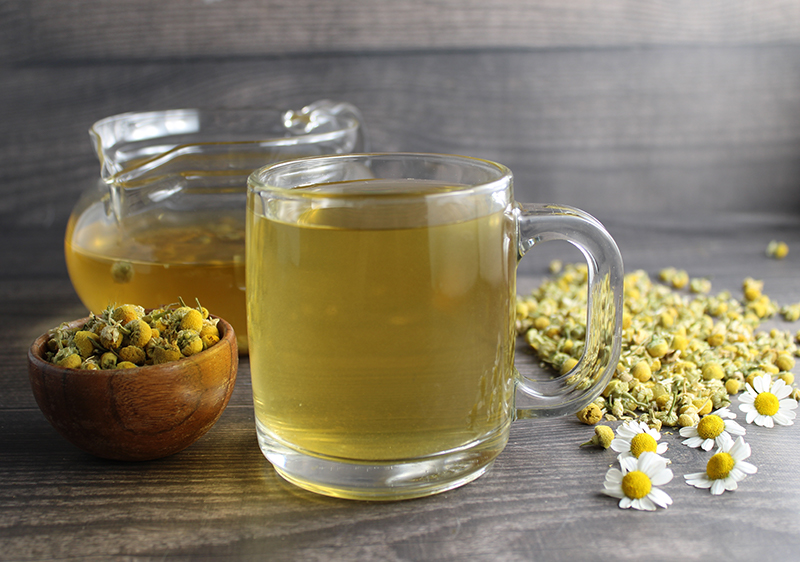
#1 Benefit of Chamomile Tea, For Sleep and Anxiety
Chamomile is often consumed as a fragrant, tranquil mood-uplifting cup of tea taken before bed as a nervine sleep inducer.
One benefit of chamomile tea over other herbs for sleep, like skullcap, is that it's gentle action and relaxing quality is not overly sedative.
Chamomile is generally considered very safe for long-term use because it doesn’t force one to sleep but rather works in a gentle way to provide nourishment to the nervous system.
In one trial, drinking chamomile tea was recommended for postpartum women to increase sleep quality and alleviate depression.
In the same regard, chamomile flowers and their nerve-soothing attributes are also great for calming general anxiety, stress and tension.
In some research, a pharmaceutical-grade chamomile extract was shown helpful for generalized anxiety disorder.
As a nutritive herb, it also contains small amounts of minerals like iron, potassium, magnesium and is highest in CALCIUM. (*) Concentrated chamomile tea infusions can provide an easily assimilated form of these nutrients.

3 Lesser-Known Uses of Chamomile Tea
1) Digestive Disorders
2) Inflammation
3) Immune Support
1) Chamomile Tea for Digestive Disorders
Chamomile tea and its bittersweet taste is beneficial as a digestive aid as it helps stimulate gastric juices. The herb is a commonly used ingredient in "digestive herbal bitters" for this reason.
The Roman variety is considered slightly more bitter than the German species and either will become increasingly bitter the longer it is steeped.
Soothing to the gastrointestinal tract, teas are not only good for encouraging proper digestion, but also work to relieve gas, nausea, constipation, acid reflux and diarrhea.
Chamomile's bitterness also assists the liver, helping this all-important organ do its job more effectively.
It is also great for stomach disorders caused by nervousness and stress. This folk use is demonstrated in the famous children’s story "The Tale of Peter Rabbit" when Peter's mum gives him a cup of chamomile tea after being chased by Farmer John with a rake.
2) Chamomile Tea for Inflammation
Famous herbalist Rosemary Gladstar describes chamomile "to have a "soft power"; though a gentle plant, it is also a powerfully effective medicine."
Chamomile flowers, scientifically speaking, are sources of antioxidants like the sesquiterpene terpenoids α-bisabolol, chamazulene, and β-farnesene as well as the anti-inflammatory flavonoids apigenin and luteolin, also found in parsley, celery and dandelion root.
Most of these healing components are in the essential oil content and therefore should not be boiled but infused in hot water and captured with a lid on the jar or teapot.
Blue German chamomile contains higher amounts of matricine,
chamazulene and azulene, all related compounds known for their
anti-inflammatory influence
(*)
and for soothing achy joints.
Both varieties have mild demulcent qualities which means they become slightly mucilaginous when prepared in hot water. This property provides a protective film to mucous membranes which can help to alleviate minor pain, PMS, fever and other inflamed conditions.
3) Chamomile Tea for Immune Support
Our immune system in general can benefit from the use of chamomile tea.
Not only does it encourage antioxidative effects at inhibiting free radical damage, tea infusions also have antimicrobial attributes.
This means they are purifying to the intestinal microbiome and its important role in human immune health.
Chamomile flowers are often used in skincare products for their cleansing and beautifying impact.
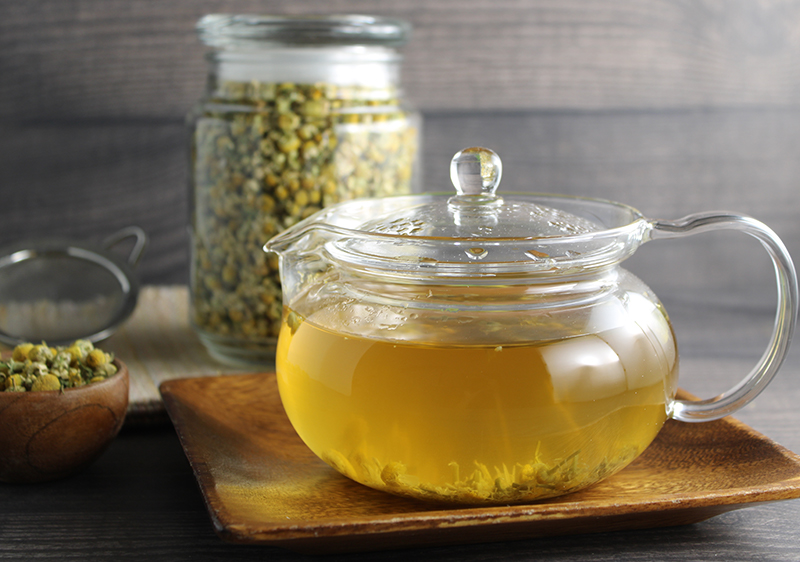
Chamomile Tea Recipe
The most widespread use of the dried or fresh herb is as a tisane or hot water-infused tea. We suggest using loose dried chamomile flowers as opposed to packaged tea bags. The chamomile is often a better quality and also less expensive when you purchase it in bulk quantities.
Our general recipe for making chamomile tea using dried flowers is 2-4 tablespoons per quart (32 ounces) or about 1/2-1 tablespoon per cup (8 ounces) of hot water. The amount you use all depends on how strong you'd like it and what you’re using it for.
Simply place the dried chamomile in a glass jar or teapot and pour the hot water over the top, then allow it to sit with a lid for 10-15 minutes.
Chamomile is often consumed in the late afternoon as a hot cup of tea but it is also quite pleasant as a iced tea in warmer seasons. We know some people who in fact use it as a kind of "mocktail" or herbal nightcap because of its relaxing influence.
Because chamomile has diuretic properties, it should be consumed 2-3 hours before bed to promote restful sleep.
Precautions:
Chamomile tea is considered safe to consume on a regular basis. However, allergic reactions may occur in some people sensitive to plants in the ragweed family. We advise consulting a qualified health professional before using chamomile if you are pregnant, nursing, have a serious health condition or are taking any medications.
Shop Related Products (About Affiliates & Amazon Associate Paid Links)
Affiliate Disclaimer: This section contains affiliate product links. If you make a purchase through one of our recommended links, we will receive a small commission at no additional cost to you. Thanks for the support!

